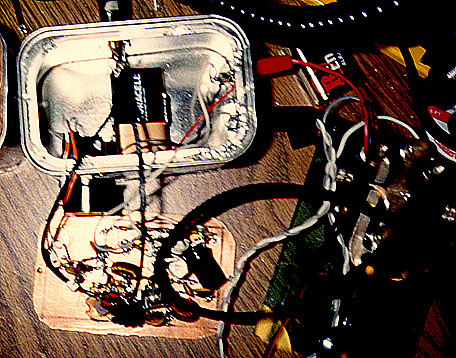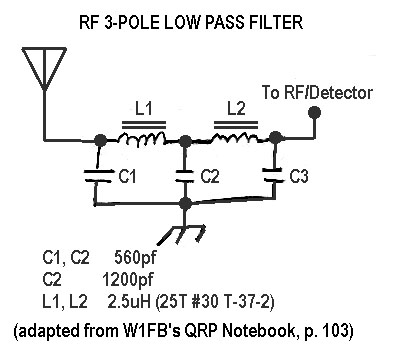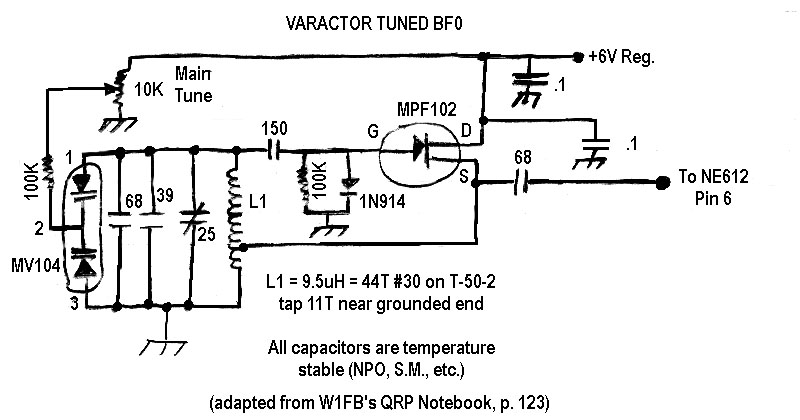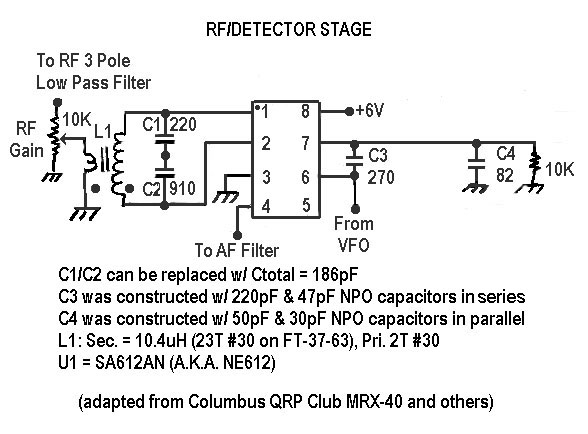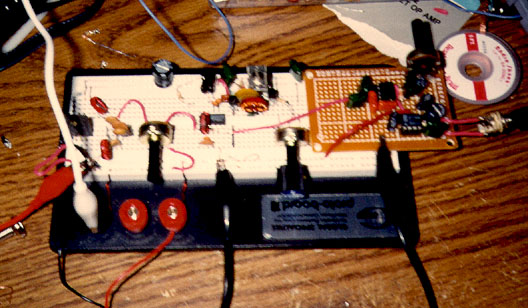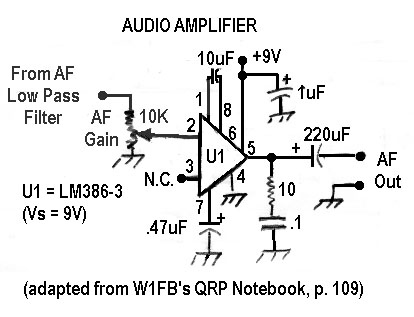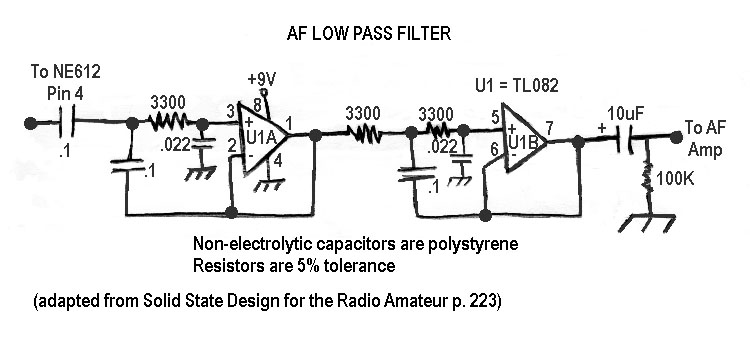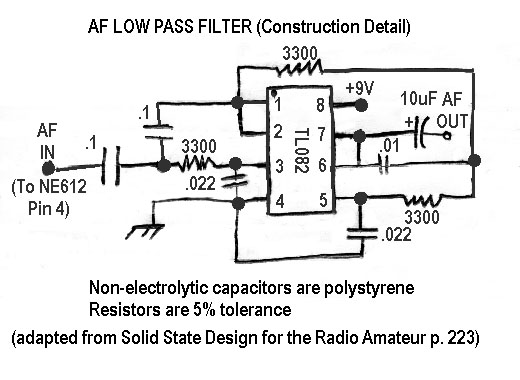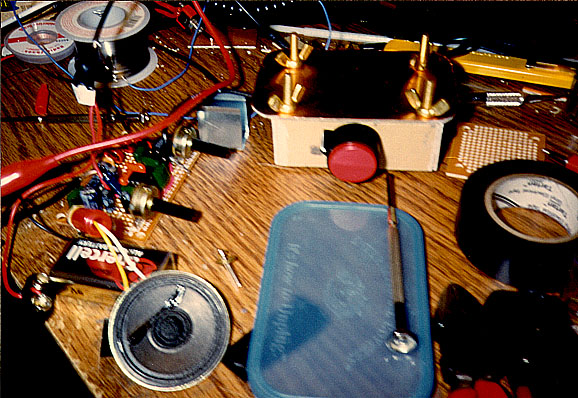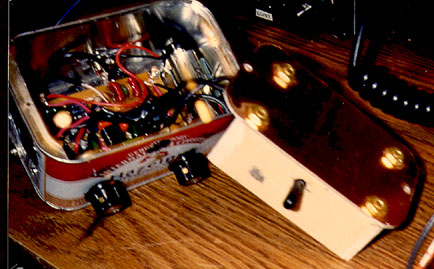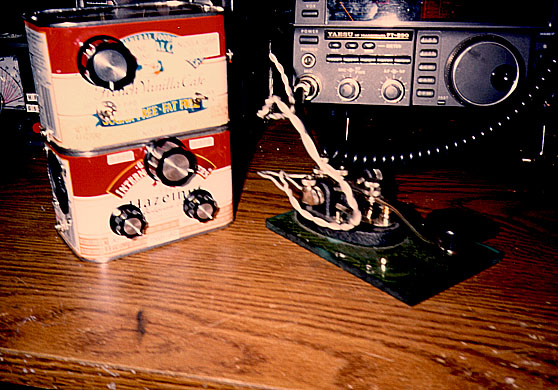How do I...?
The December, 1998, meeting of the North Georgia QRP Club was dedicated to construction of a 1 watt 80 meter transmitter. I was only able to stay at the meeting for a short time, so I built mine at home, using "butt ugly" construction.
Silly man that I am, I decided that "wouldn't it be nice if I had a simple receiver to go with this transmitter?" Discovering that Tech America stocked the SA612AN, which is the same device used in the Columbus QRP Club's MRX-40 (they used an NE612). The MRX-40 is a nifty little XTAL controlled receiver that was created as a companion to the Micronaut transmitter, featured by Dave Ingram, K4TWJ in a series of articles in 1997 in CQ Magazine.
Just to show how limited my design skills were, I made the following post, one
Saturday night around 9:00PM (EST) to the QRP-L list:
As a nice companion to the NOGA 80 transmitter, I'm looking to build an
NE612 based, SIMPLE receiver, following K8IDN's MRX-40 design. I'm a
bit baffled by the receiver input circuit and was wondering if anyone
could help me out. In a nutshell, the 40m receiver input is like this:
- What would be the appropriate values for C1, C2 and L1 for 80meters (3686KHz)?
- How does this input circuit work and what are the appropriate formulas for calculating C1, C2 and L3?
- With regard to 2, I THINK this is a "balanced input", but am not 100% sure. I think it's balanced, since the 470pF capacitor is not grounded. Also the ARRL Handbook says that the NE602 (similar to the NE612, but not the same) has an AC impedance of 1500 ohms in parallel to 3pF of capacitance. Does this factor into the equations for Q2?
- I'm sure the point of this input circuit is to be resonant around 7040KHz. How, exactly, is the circuit resonant? It's the split capacitors that confuses me.
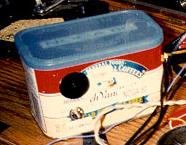
Inside view of NOGA-80 (first attempt at T/R switch is at lower center of PCB).
